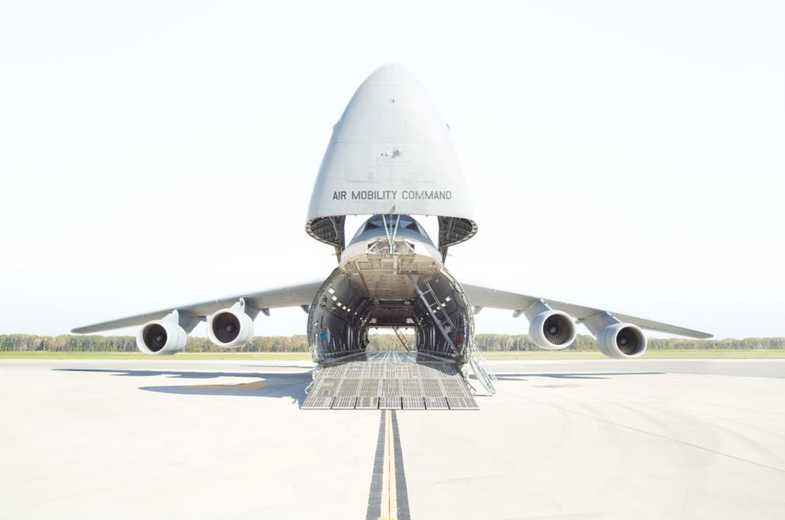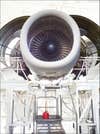In photos: the unseen aircraft that carry planes, tanks, and soldiers
Giants of the sky.


Behold the hollow belly of the largest airplane in the U.S. Air Force. The C-5M Super Galaxy is Lockheed Martin’s latest version of its C-5, first flown in 1968. With that monster cargo bay, longer than the entire distance of the Wright brothers’ first flight, it can carry a 280,000-pound load (equivalent to two 68-ton M1 Abrams tanks) for 2,150 nautical miles, then unload and keep going for 500 more. C-5s have transported everything from a deep-sea rescue submarine to Vietnamese children in 1975’s Operation Babylift.

The main cargo hold of Boeing’s Dreamlifter is 65,000 cubic feet. Another way to think of it, says Dreamlifter operations expert Dave Beck, is that the hold has enough volume for a 10-lane bowling alley in a three-story building. Beneath that space, and the huge airplane parts it carries, the Dreamlifter has a secondary hold for smaller cargo. But it didn’t start life with this much capacity. Boeing converted each one from a 747-400 jumbo jet, making it taller, wider, and longer than the already massive passenger plane.

To carry its bulk through the sky, the C-17 relies on four Pratt & Whitney F117 engines to generate 40,400 pounds of thrust. Each 7,100-pound engine, like the one pictured here, stretches nearly the length of a Honda Civic and, at its widest point, measures about 7 feet across. Together, those enormous engines provide enough lift for a C-17 to carry 10 Humvees, three Strykers, or one M1 Abrams battle tank. With a full, lighter load of 102 paratroopers, it could fly all the way from Delaware to Donetsk, Ukraine.

Deserts, jungles, the ocean, and the Arctic are too remote for most vehicles. Oil and mining companies want access to them for their resources, but there’s no cost-effective craft for getting there—yet. Lockheed Martin thinks a helium-filled airship could solve that problem. It built this experimental P-791 to test out technology for the commercial LMH-1 hybrid airship, due for a 2018 delivery. Compared with planes, it will have lower fuel consumption, quieter takeoffs, and greater fuel efficiency per ton of cargo.

The cockpit of the C-17 Globemaster III, the workhorse of the Air Force, holds three crew members: pilot, copilot, and loadmaster. The latter makes sure the cargo and people inside the craft are balanced, which is key to letting a C-17 carry large groups: It can serve as a supersize ambulance, transporting a five-person medical team with up to 34 prone patients and 54 walking ones. Thanks in part to stable transport like this, injured American troops who make it to a field hospital have a 98 percent chance of survival

The P-791 sits on four gray “feet”: its air cushion landing system. Inspired by hovercraft, these feet soften the airship’s landings and then, once it’s on the ground, use suction to anchor the craft. Lockheed used the P-791 to test components, like this landing system, that it later incorporated into the design of its LMH-1 airship. Like its sibling, the LMH-1 will take off and land vertically, giving it more flexibility than planes, with more carrying power than cargo helicopters like the U.S. Army’s CH-47 Chinook.

Boeing owns exactly four of these big boys, which it entrusts with a very special mission: carrying parts of its commercial 787 Dreamliner around the world. The Dreamlifter hinges open to grab its varied payload: It flies to Italy, South Carolina, and Kansas for up to 104-foot-long fuselage sections, to Japan for 96.5-foot-long wings, and to South Carolina and Washington state for final assembly. This method, Boeing says, reduces the time required to ship Dreamliner components overseas from 30 days to one.
This article was originally published in the January/February 2017 issue of Popular Science, under the title “Giants of the Sky.”
